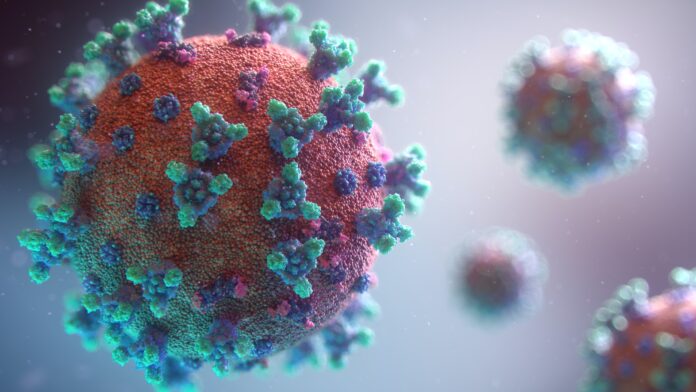In the Infection Radar survey last week, the percentage of participants with COVID-19 like complaints slightly increased, 1.9%, as compared to the week before, 1.6%. The number of people who were tested positive for COVID-19 reported to the Municipal Public Health Services (GGDs) remained the same (+2%). The number of people who were tested for COVID-19 by the GGD also remained the same (+3%).
On the 23 August 2022, the reproduction number based on reported positive tests was 0.95 (0.88 – 1.02). The number of new hospital admissions of patients with SARS-CoV-2 decreased (22%) compared to the week before. The number of new ICU admissions of patients with SARS-CoV-2 remained relatively low, dropping to 15 ICU admissions last week (‑26%), compared to 20 ICU admissions the week before.
Sewage surveillance
In sewage surveillance, the national average viral load decreased slightly in week 34 (22 – 28 August 2022) and the first half of week 35 (29 – 31 August), dropping by ‑8.7% and ‑11.8% respectively. The average number of virus particles was highest in and around Amsterdam and The Hague in week 34, and in Brabant-Zuidoost in the first half of week 35 (based on preliminary figures). The BA.5 Omicron sub-variant is still observed most frequently.
Virus variants from pathogen surveillance
So far, the Omicron variant has five sub-variants that are currently being monitored closely. These have been designated BA.1, BA.2 (including sub-variants BA.2.12.1 and BA.2.75), BA.3, BA.4 and BA.5.
Since June 2022, Omicron BA.5 has been the dominant variant in the Netherlands (>90% of the tested samples since week 29). According to the WHO, these variants do not appear to cause more serious illness than the BA.2 variant that was recently most prevalent in the Netherlands. However, there are indications that antibodies may be less effective against these variants.
Since July 2022, various countries have recently observed a new sub-variant of the Omicron BA.2 lineage: BA.2.75. This sub-variant has been found in India, Australia, Japan, Canada, the USA, Germany, Denmark and the UK, among other countries. BA.2.75 has been increasing recently in pathogen surveillance in the Netherlands. It is too early to say whether this will lead to an increase in the number of infections. BA.2.75 seems to have minor specific mutations that enable it to more easily evade the immunity built up against COVID-19 (by vaccination or previous infection). There are no indications that the BA.2.75 sub-variant would be more likely to cause severe illness compared to the other Omicron sub-variants. This sub-variant seems to be increasing slowly in the Netherlands and in the surrounding countries. RIVM will continue monitoring the situation.
Numbers
According to the RIVM updates, last week 7,856 persons reported positive corona test results and 220 persons newly hospitalized as compared to 7,735 and 281, respectively, the week before. Among the hospitalized patients, 15 were admitted to Intensive care units as compared to 20 patients the week before. The COVID-19 related mortality number decreased to 10 as compared to 12 deaths, the week before.
Source: RIVM.nl
Translated: Yawar Abbas











